French Connection #4 : The ‘French’ circumnavigate the globe in crewed format
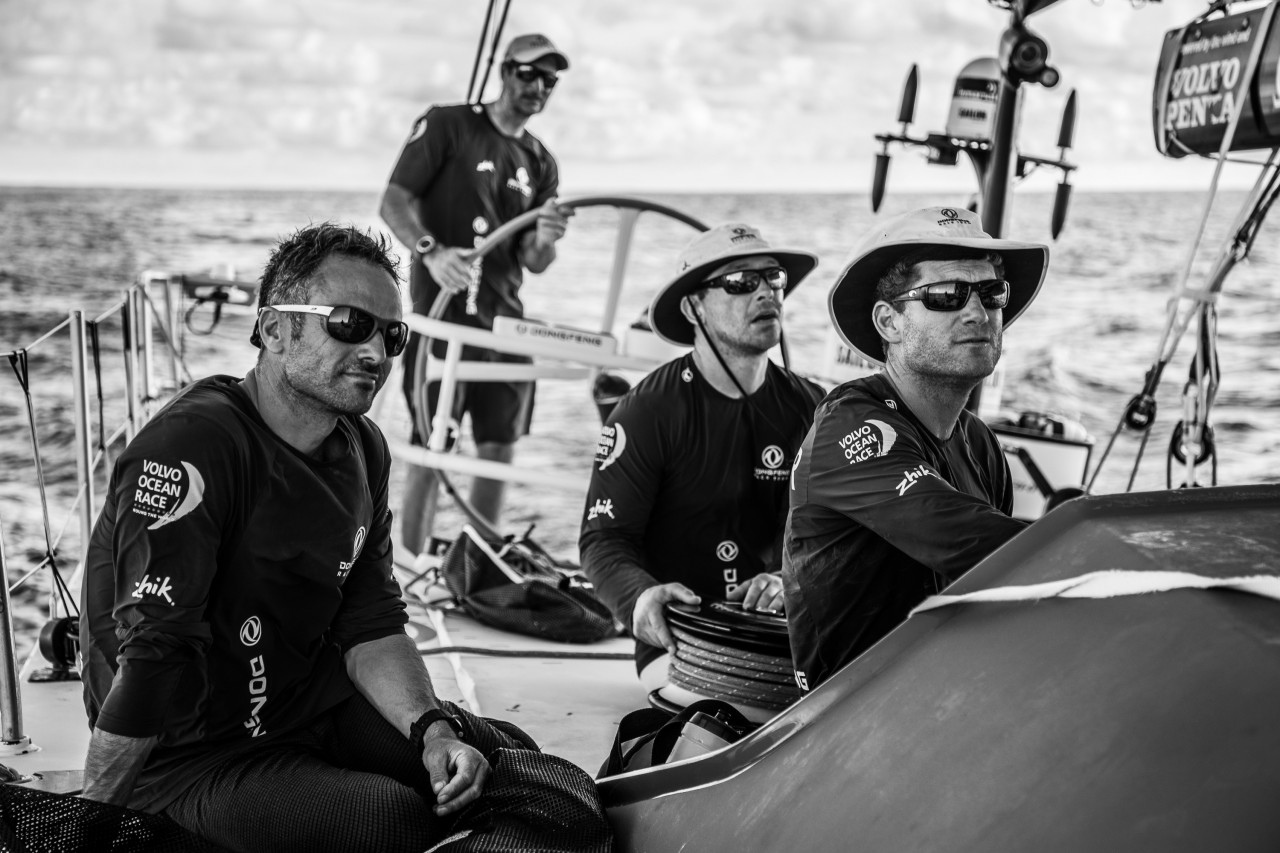
In the fourth part of our series, IMOCA and The Ocean Race retrace the history of the crewed round the world race, which has showcased the talent of countless French sailors, from the first edition in 1973-74 to the most recent in 2017-18.
Very often known better for their exploits in singlehanded and double-handed round the world races like the Vendée Globe and the Barcelona World Race, international sailors tend to forget that the French have also been big exponents of crewed racing and excel at it.
Over the years, some of the greatest French sailors – men and women – have taken part in the crewed round the world race, among them Éric Tabarly, Olivier de Kersauson, André Viant and his daughters Sylvie and Bénédicte, Bernard Deguy, Éric Loizeau, Philippe Poupon, Lionel Péan, Florence Arthaud, Christine Briand, Halvard Mabire, Isabelle Autissier, Sébastien Josse, Pierre Mas, Jean-Yves Bernot, Christine Guillou, Hervé Jan, Alain Gabbay, Michel Desjoyeaux, Jean Le Cam, Roland Jourdain, Eugène Riguidel, Sidney Gavignet, Jacques Vincent, Franck Cammas, Jean-Luc Nélias, Charles Caudrelier, Pascal Bidégorry, Kevin Escoffier, Jérémie Beyou, Marie Riou, Nicolas Lunven and Anthony Marchand. In fact, France is the second most represented nation since the event began nearly 50 years ago, a sure sign of the event’s appeal…
100 books chosen by a future academic and more than 100 bottles of great wine per leg
“In 1973, I competed in the first leg aboard Kriter with Michel Malinovsky in the role of skipper and Jack Grout as owner. Given the atmosphere on board, I packed up my bag and sailed the second and third leg on Pen Duick VI with Éric Tabarly,” said Bernard Deguy, former captain of Commander Cousteau’s Alcyone. At 83 years of age he is as fit as a fiddle and has just completed his umpteenth transatlantic passage aboard an 8.50-metre production boat.
After his experience with Tabarly, Deguy came back for another go. “I went on to sell my share of the family property, which didn’t even represent a quarter of the value of Neptune, the boat I’d just purchased,” he said. “I was in debt at that point. Back then, we did things on a shoestring. I was 37 and responsible for all the project management. I was oblivious to what a round the world race was all about. I found the first Whitbread Round the World Race with Tabarly to be relatively easy, so I couldn’t envisage any difficulty in having another crack at it with friends and family members. I believe that if we can climb Mont Blanc together, we’ll also be able to climb Everest…”
Before the voyage, Deguy put together a reading panel with the future academic, Bertrand Poirot-Delpech, and his cousin Michel Deguy, a philosopher and poet. “When we set sail from Saint Malo and headed to the race start in Portsmouth, each of the ten crew received ten books free of charge and were tasked with reading them… something that would be quite unthinkable today in The Ocean Race. We also had 400 bottles of wine, which equates to 100 per leg – a Bordeaux grand cru gifted by one of former French President Valéry Giscard d’Estaing’s brothers-in-law.”

A marriage proposal in Cape Town
Éric Loizeau, a talented young sailor, climbed aboard Pen Duick VI to learn the ropes with Tabarly, before becoming the skipper of Gauloises 2 (ex Pen Duick III) during the Whitbread 1977-1978. During a stopover in South Africa in the midst of apartheid during the Triangle Atlantique, a preparatory race for the round the world contest, Loizeau was approached by a young woman. “She was a student and the only daughter of Afrikaner doctors, and asked if I would marry her, though not seriously… Indeed, she was keen to use this promise of marriage to a young Frenchman to help her leave her country and a racial policy that so appalled her… A few days later, we headed over to the city hall in Cape Town hand-in-hand, where I signed a few papers so she could obtain her visa. On the day of the race start, we bade each other farewell, exchanging a few loving kisses under the mocking gaze of my crewmates, who were familiar with the story…”
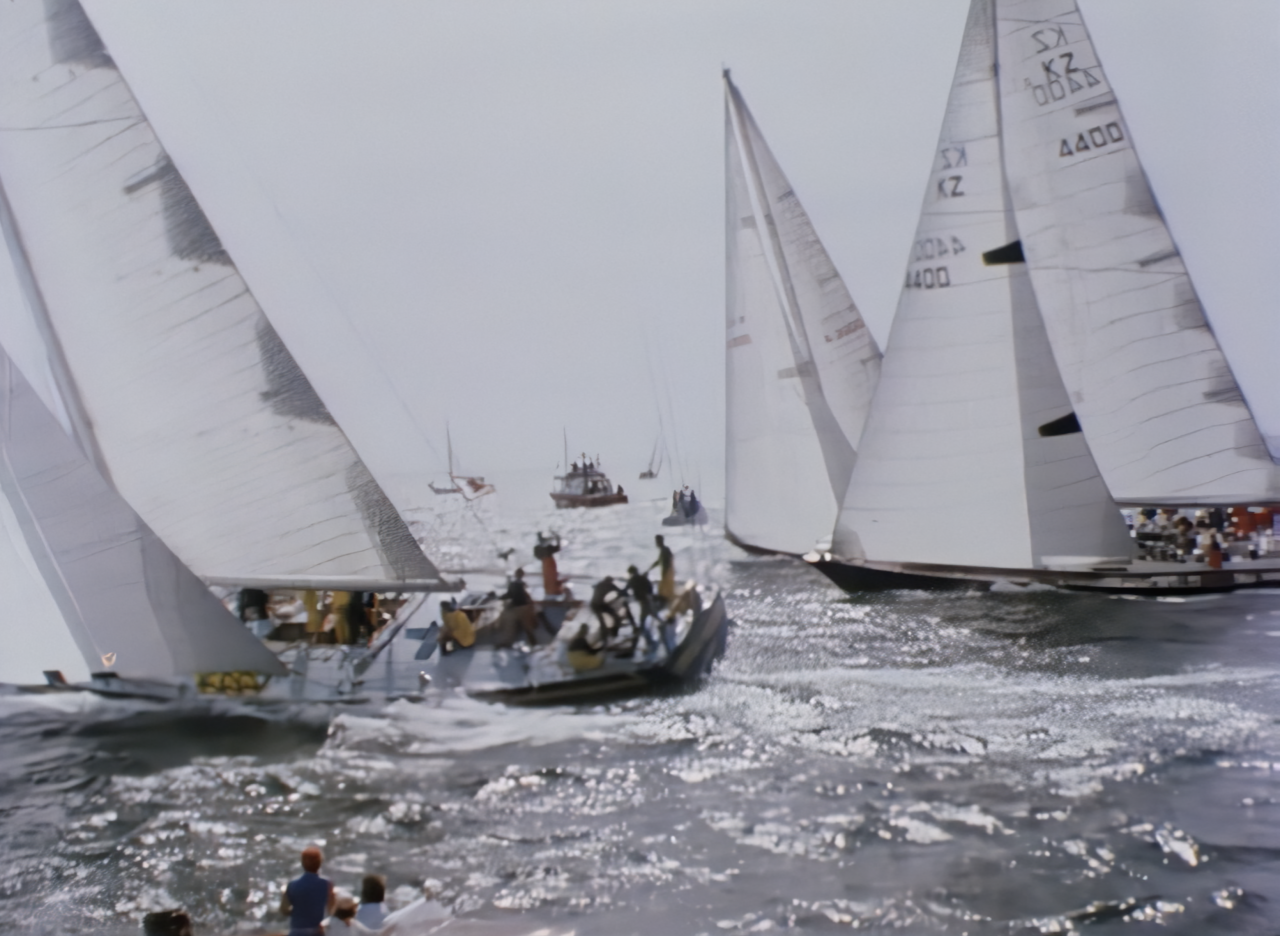
Drawing a veil over amateurism and washing with Harpic
“The Whitbread was already a truly international race by then, not a ‘Franco-French’ type race, but an eclectic, informal mix of multi-millionaires and the stone-broke. With the Volvo Ocean Race came professionalism, which was a big step from what we were doing,”said Bernard Deguy, laughing. “At that stage, we left the ‘informed amateur’ world and stepped up to very strong athletes who were real all-rounders…”
Alain Gabbay, a 23-year-old Mediterranean with frizzy hair, took part in the 1977-1978 edition on 33 Export. Sailed by a somewhat relaxed crew with plenty of pluck, the boat was soon nicknamed ‘la poubelle jaune’ (yellow trashcan) by the French press and fellow competitors, given how filthy it was at every leg finish. Cleaning didn’t seem to be a priority aboard the 1968 Mauric design. At the finish in Rio de Janeiro and before going clubbing, the crew – who were “absolutely humming” – decided to spruce themselves up. There was no toothpaste aboard so they decided to clean their teeth with Harpic, a powerful descaling agent for toilets… How the gums reacted is anyone’s guess, but Gabbay’s talent for racing certainly made an impression, winning over the champagne brand Charles Heidsieck three years later and building a boat specifically for the race, which would see him finish second behind Flyer 2.
“After my initial experience on 33 Export, I’d got my head around a few things,” said Gabbay. “As a result, we laid the foundations for a more professional outfit. We had a boat that we’d chosen, devised, had designed and built, with a partner which had the budget and above all the time to complete a test campaign. We were fairly confident at the start in September 1981 in Portsmouth. There had never been so many entries: 29 crews at the start. I’d selected Gilles Vaton to design Charles Heidsieck III, because he’d worked with André Mauric and had helped me out on 33 Export. The deck was only three millimetres thick. We were already obsessed with making boats as light as possible, which enabled us to save nearly 600 kilos in the structure. The event was run on a corrected time handicap.”Later on, Gabbay would launch Charles Jourdan. On her third Whitbread, Florence Arthaud was notably invited to crew for him.
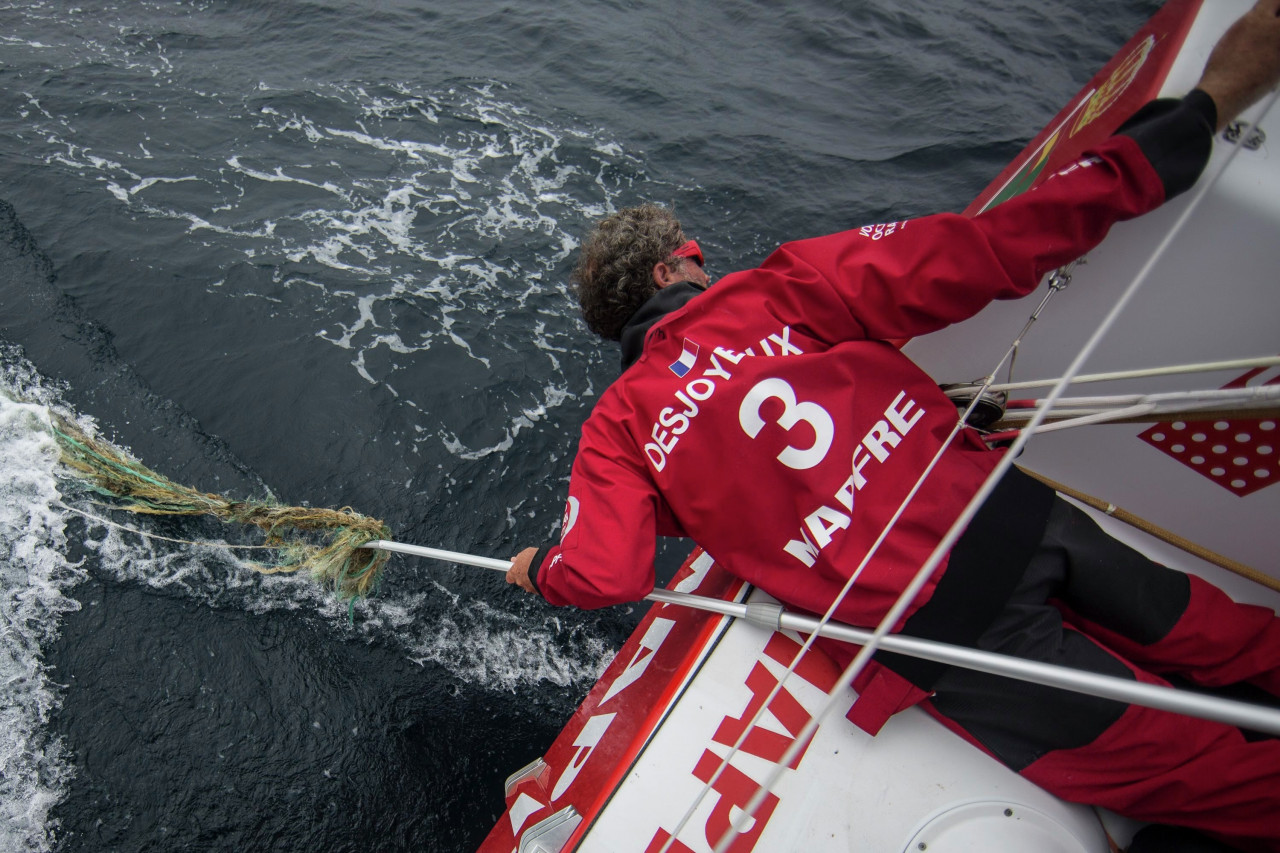 © Francisco Vignale/MAPFRE/Volvo Ocean Race
© Francisco Vignale/MAPFRE/Volvo Ocean Race
A male lead by the name of Desjoyeaux
“I first encountered Éric Tabarly through his books. I must have been 10 or 12,” recalled Michel Desjoyeaux. “However, my first face-to-face meeting with him wasn’t until 1984, at 19, when Jean Le Cam, who’d competed in the 1981 Whitbread, invited him over to his house. In the year in question, my friend Roland Jourdain was participating in La Solitaire du Figaro, and Pen Duick VI was the support boat for the race. Tabarly was looking for crew. Jean introduced me to him that day so I could apply. Two days later, we went out for a quick sail off Bénodet. We had to put in a few manoeuvres, one of which involved us hoisting a large genoa with the clew flogging around. We’d forgotten to tie a second sheet onto it, which meant it was impossible to tack. I quickly clambered up to the clew, holding on with one hand and tying a bowline with the other, and then I promptly climbed back down. Éric looked at it and said: ‘it’s good, let’s tack.’ He took me on.
“Above all, you learned not to get annoyed and not to fear the elements,” added Desjoyeaux. “I remember sailing flat out in the Indian Ocean in massive seas. We’d just blown out a spinnaker that was more than 300 square metres. Éric asked: ‘what do we have left in the way of spinnakers?’ There was a smaller one and a much bigger one. He said: ‘OK then, we’ll hoist the bigger one.’ I think we ripped that one too later on. Nothing ever scared him.”
The rest is history. Desjoyeaux competed in two Whitbreads with his master, before going onto become the most successful solo sailor of all time, winning three Figaros, the OSTAR, the Route du Rhum and two Vendée Globes. ‘Mich Desj’, like a number of French racers, ranks among those who have experienced the Whitbread, later renamed the Volvo Ocean Race and today known as The Ocean Race, as well as IMOCAs. He’s not alone, as Sébastien Josse, Marc Guillemot, Charles Caudrelier, Kevin Escoffier, Pascal Bidégorry, Jérémie Beyou, Nicolas Lunven… to name but a few, know an IMOCA inside out.
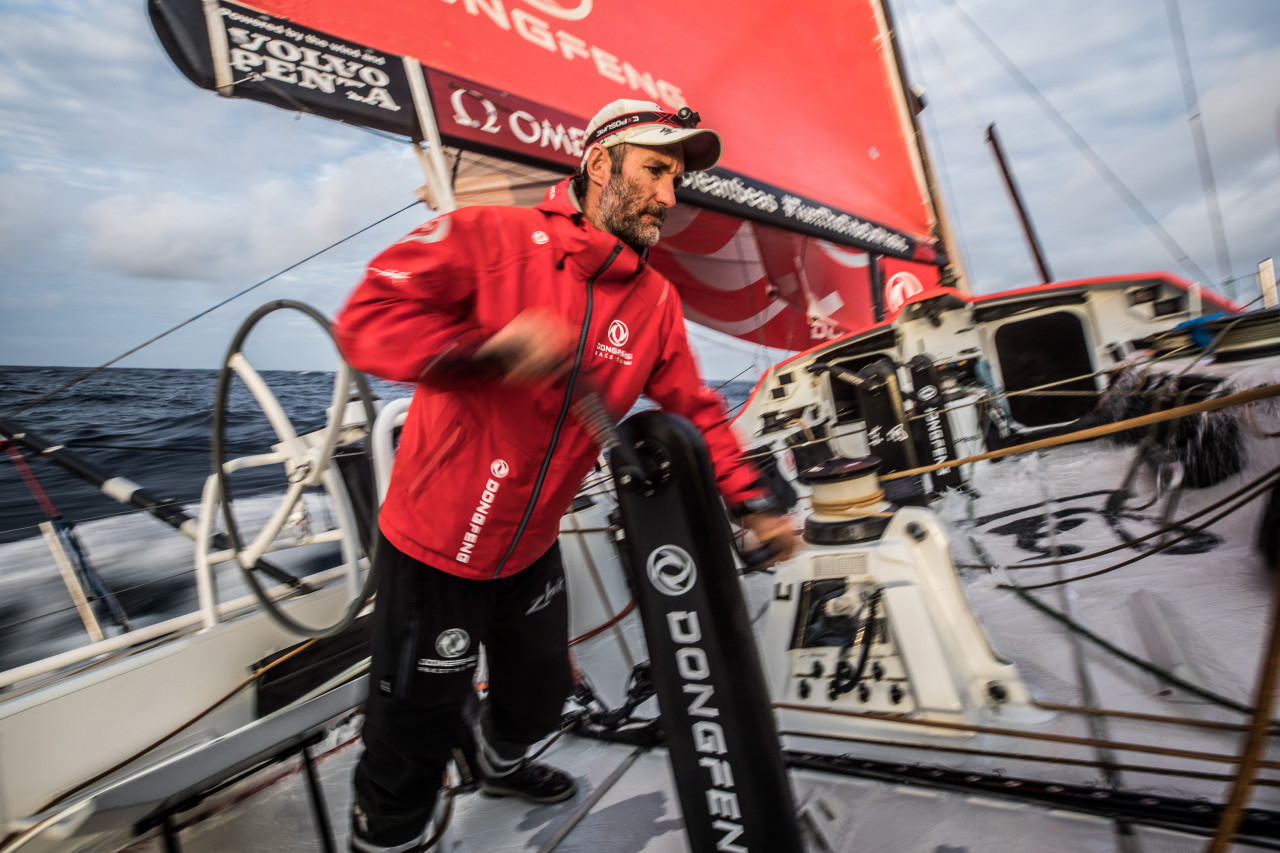 © Martin Keruzore/Volvo Ocean Race
© Martin Keruzore/Volvo Ocean Race
Jérémie Beyou: “an addictive race!”
Jérémie Beyou, another triple Solitaire du Figaro champion, won the last Volvo Ocean Race in 2017-18 as part of the crew on Dongfeng Race Team skippered by Charles Caudrelier. “I quickly understood that it was an addictive race, just as Carolijn Brouwer (crew aboard the boat) had told me,”said Beyou. “I’d done a fair amount of crewed sailing at one point… and it was great to get back into it. You’re just there to sail, focused solely on the competition and the water. Not a minute goes by without you snatching back a centimetre here or easing off a centimetre there. In fact, it’s kind of like going back to the basics of sailing, with the synergy of helm-trimmers”
 © Martin Keruzore/Volvo Ocean Race
© Martin Keruzore/Volvo Ocean Race
Charles Caudrelier and his mainstays Pascal Bidégorry and Kevin Escoffier
Caudrelier is the last winner of the crewed round the world race, having also won it in 2012 with Franck Cammas. When we asked him about pairing up with Pascal Bidégorry, the navigator who famously took a daring winning option in the final tack to Holland after nine months of racing, the answer was clear: “Pascal was kind of the hard core of our project, but you have to add Kevin Escoffier to the mix. We were a group of three and it had to work between us. That’s also part and parcel of The Ocean Race.”
Escoffier agrees: “This crewed round the world race in foiling IMOCAs will be just fabulous.”
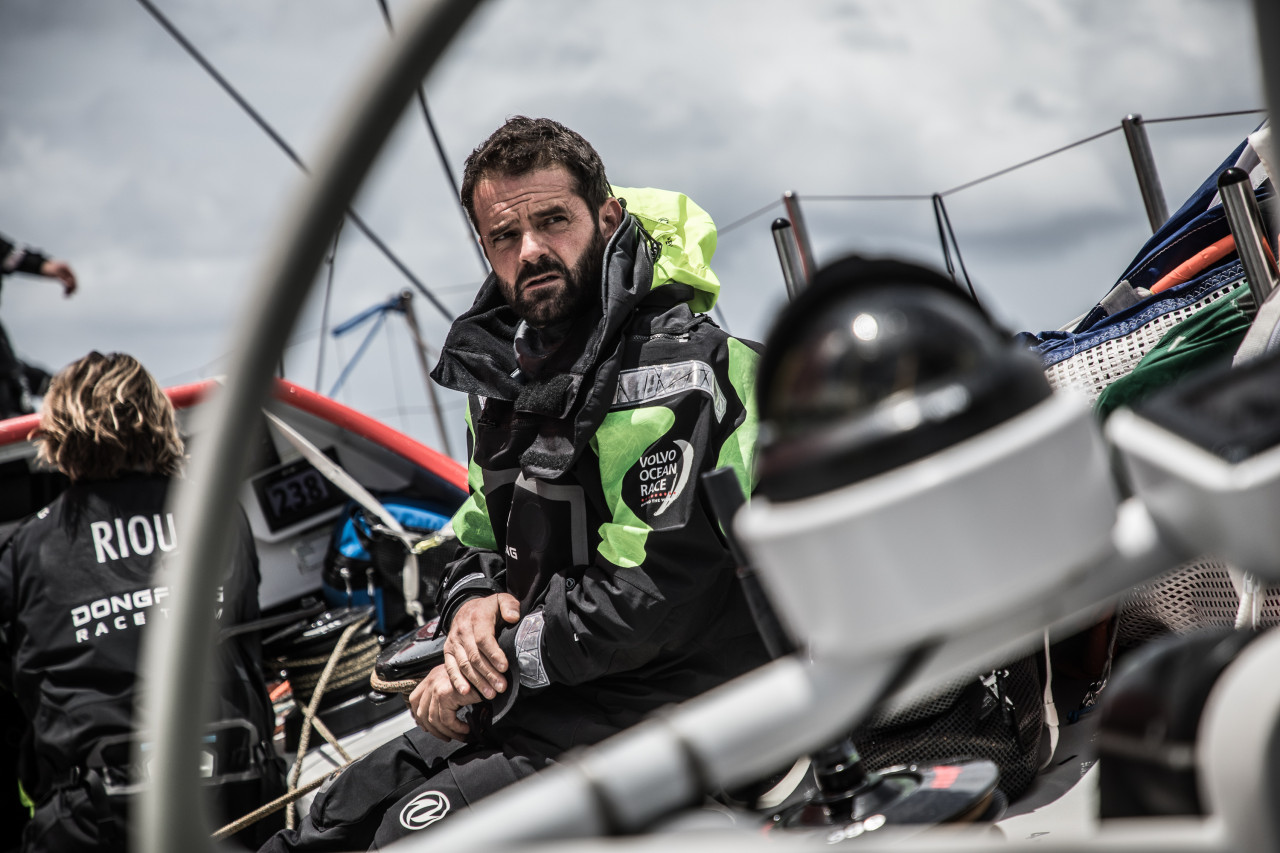 © Martin Keruzore/Volvo Ocean Race
© Martin Keruzore/Volvo Ocean Race
Teams info
ALL ACCESS #2 | CLARISSE CRÉMER
Let's dive into the thrilling preparations for the Vendée Globe. For the IMOCA skippers, the year 2024 holds paramount importance, marking the culmination of their efforts. Sailing around the world solo is their ultimate…
•••The Ocean Race and IOC/UNESCO: contributing towards the science we need for the ocean we want
The Ocean Race and IOC UNESCO collaborate on ‘Sailing into the Future for the Ocean Decade’ event in Barcelona
•••